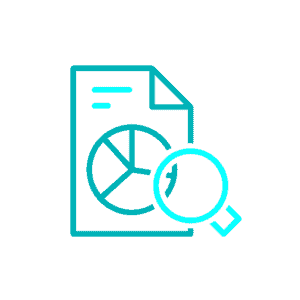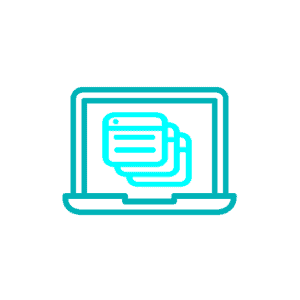What’s this
An Artificial Intelligence, Computer vision and Object Recognition platform, specific for the insurance sector.
What does he do
How does it work
It is a series of intelligent engines based on recurrent artificial neural networks that analyze images to identify, recognize, interpret, classify, control and make the data contained therein usable.

acquisition

recognition

data extraction

classification

verify

export
Now the data contained in the documents can be extracted, processed, communicated, made available for statistical purposes, without the need for human intervention.
Digitizing is no longer just about saving a digital image of your documents.
Horus eliminates process latency and costs by automatically extracting and understanding document content from any channel and in any format.
Key Features

Acquisition
An innovative platform capable of interpreting and processing data from all types of documents, including paper (scanned or photographed) or digital, structured and unstructured documentation formats, images, email attachments and message bodies.
A photo taken with a mobile phone is enough to eliminate manual data loading steps.
Recognition
Regardless of where they come from (mobile devices, websites, trust portals, web-services, e-mails, faxes, document scanners, FTP or multifunction printers), documents are subjected to optical reading and interpretation of printed and / or handwritten characters (in block letters) thanks to a powerful intelligent OCR module.


Intelligent data extraction from different sources
Information is extracted from data fields, converted into electronic format and sent to business processes. It is possible to extract data and information from any kind of document in digital or electronic format, and make them immediately processable, automating a good part of the Data Entry phases.
Advanced document classification
Incoming communications are automatically classified by content, visual forms, types (identity documents, driving licenses, reports, models, invoices, recipes, complaints, appraisals, letters, emails, free text, spreadsheets), optimizing processes based on information within the company.


Data validation and control
Data fields, context and critical elements are automatically identified, validated and processed based on business rules and requirements.
Characters not clearly recognized and empty fields are reported to the user so that he can simultaneously view and compare the recognized data fields with the image of the original document
Data export
Horus Capture automatically exports the recognized data in different formats or to databases, archiving systems and other destinations according to the rules defined by the user:
- Corporate repository for file storage
- Database
- RPA, BPM, ECM, ERP and CRM systems
- Simple integration with RPA workflows
- Document archives
Attention: You can set up mapping and delete sensitive information both in a section of the document and in linked documents.

The technology of the future
Classification technology uses Convolutional Neural Networks and deep learning to visually identify any type of incoming document, including images, based on appearance or pattern.
While the comprehension and classification of texts is based on statistical and semantic text analysis carried out by engines “trained” automatically with the most recent automatic learning methodologies.
MANAGED DOCUMENTS
A smartphone is enough to send the document to HORUS and submit it to an in-depth automatic analysis, eliminating any manual data loading step, allowing the automatic compilation of forms and the direct saving of the information on the DB.
Horus is able to manage:
- identity documents
- paper reports
- paper documentation
- damage photographs
- reports
- medical bills
- expense invoices in general
- questionnaires
- forms
- CAI form
- letters
METHODS OF CLASSIFICATION
An Artificial Intelligence engine categorizes the detected contents and makes them available for subsequent processing within the various data collection systems.
Horus offers image, text or rule based classification methods that can be combined into a hierarchical system offering full processing performance and less manual review.
Thanks to Horus they become automatic:
- document registration, both physical and digital
- classification of profiled documents
- image processing by means of optical readers for the treatment and subdivision of the images
- instant creation of all necessary indexes and search keys
- export of recognized data in different formats or to databases, archiving systems and other destinations according to the rules defined by the user
All the data contained in the attached documents both in the underwriting phase and in the opening of the claim can be quickly acquired and classified: identity documents, paper forms (CAI form), medical prescriptions, reports, complaints from the intervening authorities, questionnaires and personal data.
Reliability
The system can be trained easily and uses constant machine learning for continuous optimization. With comprehensive reporting and chain-of-custody management, it allows you to better calibrate results for end-to-end compliance with security processes and models.
The verification form automatically checks that the extracted fields match those of the original document. Alternatively, the user can proceed manually to verify any correspondence between the original document and the recognized data and make any corrections by typing manually.
Automatic validation includes:
- comparison with databases
- compliance with built-in validation rules
- compliance with formats
- data normalization
- user-defined controls
Speed up the management of the claim
The documents and images photographed and uploaded by the insured during the opening of the claim file are subjected to various checks (based on external DBs), to ensure that they have not been manipulated, already used or taken from the internet.
Furthermore, contextual checks are carried out on:
PLATES -> check of the insured vehicle, vehicle reported to the police, verification of correspondence between the number plate declared and the make and model of the vehicle photographed
LICENSES -> validity, person reported to the police Cross-checks on the content of documents
Mobile Capture
Increase data availability and processing speed by using mobile devices or other inbound document sources.
Image enhancement tools ensure high quality mobile uploads. Confirmation reports notify you when images have been uploaded and processed successfully.
Create the perfect mobile experience and capture workflows on your device with the highest level of success and accuracy with advanced SDKs for image processing on mobile applications.
Insurtech and surroundings
ARTIFICIAL INTELLIGENCE AND MACHINE LEARNING
